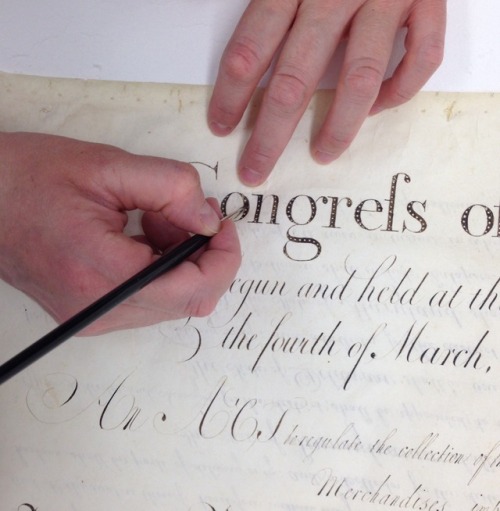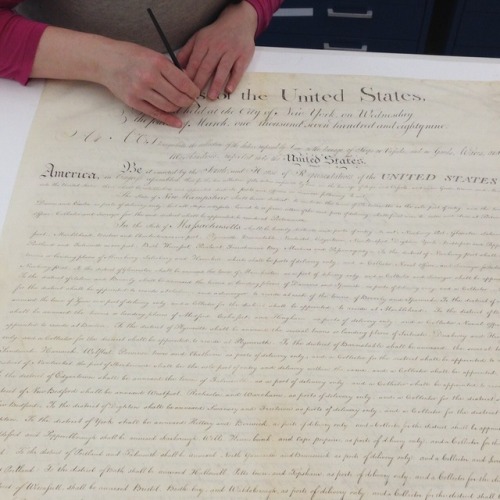#iron gall ink
These parchment records are being treated for display in the Public Vaults exhibit at the National Archives in Washington, D.C. Parchment reacts to even slight changes in relative humidity by expanding or contracting, and inks on its surface can be damaged by this flexing. Some of the iron gall ink used to write these documents was flaking and cracking. Conservators consolidated the iron gall ink using gelatin applied with a very small brush, to re-adhere the ink to the parchment.
[RG11, Enrolled Acts and Resolutions of Congress (1789 - 1823 Segment), An Act to regulate the Item collection of the duties imposed by law on the tonnage of ships or vessels, and on goods, wares and merchandises imported into the United States.]
Post link
In July of 1776, Timothy Matlack was the scribe charged with writing out the Declaration of Independence. He would have dipped his quill pen into iron gall ink.
Watch now as Rachel Bartgis, a conservation technician for Preservation Programs at the National Archives, shows us the unusual ingredients commonly used to make iron gall ink at the time the Declaration was written.
Learn more about the creation and preservation of the Declaration of Independence: http://bit.ly/2s0j3Bd


